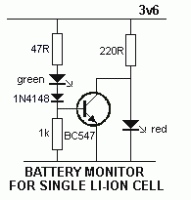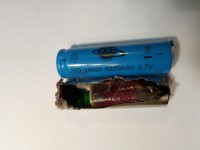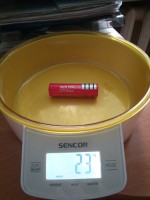Hello. He plans to buy cells to power a portable speaker of his own design. The amplifier consumes a maximum of 3A (power supply from 10 to 15v)
so 3 cells connected will give this volts. and here I have a problem which cells to choose? on the Allegro I found UltraFire 18650 for PLN 3.73 with a capacity of 8800 mAh Lion ,, 18650 battery, 3.7V 8800mAh Li-ion "the price is low so I don't know if it's worth buying because it seems very strange to me,
in the loudspeaker, I would like to give three cells twice, i.e. 52800mAh, so it is a lot, but I do not expect a 8800mAh capacity from them, and my question is how many cycles can 100 cycles withstand? and by how much their capacity can drop, and how to charge the connected cells (3 together) with 15v? and what power? and is he going to make such a charger that when they get charged, it will stop charging them. Thanks in advance for your answer
Added after 30 [minutes]:
is it better to buy used branded?
so 3 cells connected will give this volts. and here I have a problem which cells to choose? on the Allegro I found UltraFire 18650 for PLN 3.73 with a capacity of 8800 mAh Lion ,, 18650 battery, 3.7V 8800mAh Li-ion "the price is low so I don't know if it's worth buying because it seems very strange to me,
in the loudspeaker, I would like to give three cells twice, i.e. 52800mAh, so it is a lot, but I do not expect a 8800mAh capacity from them, and my question is how many cycles can 100 cycles withstand? and by how much their capacity can drop, and how to charge the connected cells (3 together) with 15v? and what power? and is he going to make such a charger that when they get charged, it will stop charging them. Thanks in advance for your answer
Added after 30 [minutes]:
is it better to buy used branded?






